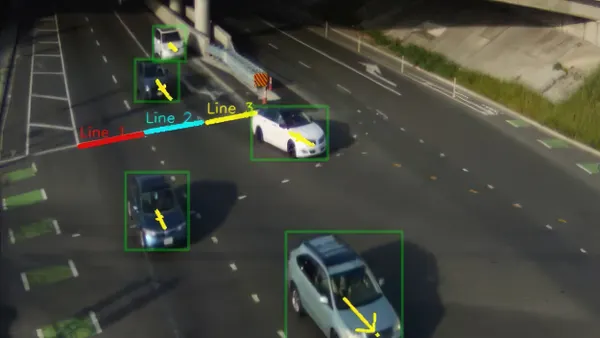Editor's Note: This piece was written by Airbiquity CEO Kamyar Moinzadeh. The opinions represented in this piece are independent of Smart Cities Dive's views.
When it comes to automotive talk today, "autonomous" is all the rage. Whether there are predictions for it, or competitive banter around it, it seems to be the major thing the industry is talking about. But what’s been going on between the initial introduction of the connected car and where we're headed in the future?
Phase 1: Connectivity
While connected car technology and consumer awareness momentum has certainly gained speed over the last couple of years, it isn't as new as it may seem. In fact, establishing connectivity in the vehicle can be mapped back as far as the mid-90s when the first connected vehicle service, GM’s OnStar, made waves with the ability to contact call centers for roadside assistance or cash notifications. While the industry may not have fully realized it, or appreciated it at the time, connectivity in the vehicle was the catalyst for new technology and services that will lead us to fully autonomous driving in the future. To reinforce this point, by 2022, 75% of vehicles manufactured are forecasted to be connected cars.
Phase 2: Infotainment
Throughout the evolution of the connected car there has been steady development and experimentation with various technologies and the features they enable. One feature available in most new cars today — infotainment — brought familiar mobile apps like Facebook, Twitter and Spotify into the cabin thereby transforming the vehicle from a dedicated transportation mechanism to an extension of consumer’s digital lifestyles. Infotainment systems are a main selling point today, particularly amongst the younger generation of drivers, of which more than 70% cite its features as "must-haves" when purchasing a car.
Phase 3: Software and data
The current phase of connected car is focused on software and data management. Like the rest of the world today, features and services powered by software, data and analytics aim to improve the consumer user experience — and automotive is no different. By leveraging connectivity to deliver over-the-air (OTA) software updates and data management, automakers and consumers alike will realize major benefits such as: software recall expense reductions; faster cybersecurity response times; less time spent at dealerships; and the ability to enhance vehicle features and performance post-purchase.
Phase 4: Autonomous driving
The most disruptive phase of transportation on all levels, from vehicle design, mobility models, and how society experiences transportation in general, is coming up on the horizon: fully autonomous driving. It’s both exhilarating, and a bit nerve-racking, to think how close we are to large scale deployment of technology that will turn how we’ve driven vehicles for the last century on its head. Major automakers and tech behemoths alike are racing to be the first to the finish line with this new form of “smart” transportation, and the winners remain to be seen. The most likely outcome will be strategic partnerships across both industries — creating new age industrial power couples — that will bring true autonomous driving (defined as SAE Level 5) to the masses. When this happens, vehicles will routinely serve as indispensable transportation assistants by understanding individual passenger preferences (as there will be no traditional "drivers") and optimizing travel experiences using artificial intelligence (AI), virtual assistants, and real-time 24/7 access to on-board and off-board data and analytics.
As this landmark is finally reached, around 2020-2025, the monetization potential will continue to rise adding yet another benefit to the deployment of new technologies. Over the next decade, by 2035, global sales of autonomous vehicles are expected to grow to 21 million units annually representing a double digit percentage of total vehicle production. Without a doubt it will continue to be an exciting ride for the automotive industry and consumers alike.









